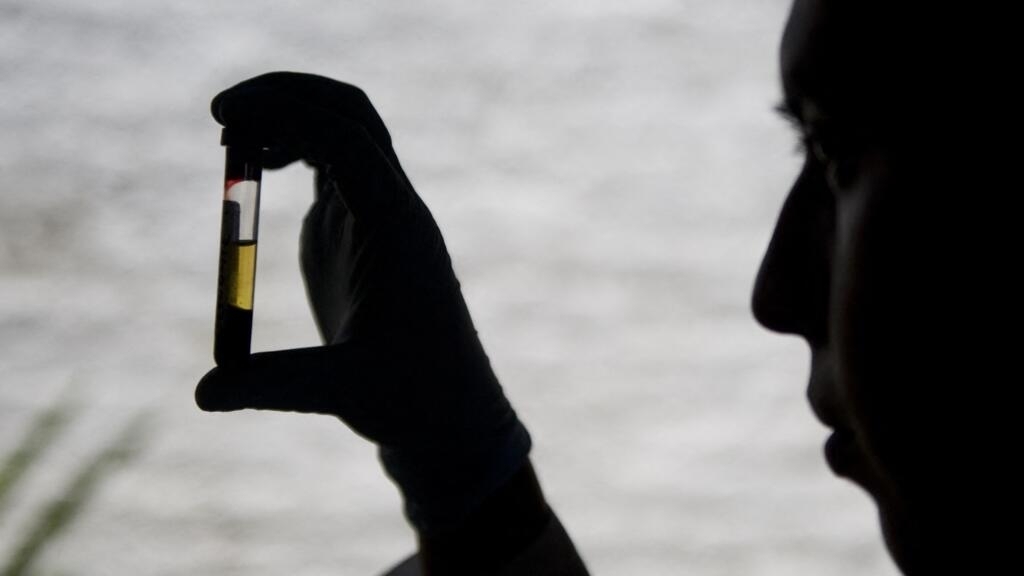First modification:
On the occasion of World Malaria Day, a France 24 team traveled to the jungle region of Chocó, on the Colombian Pacific coast. This department registers the highest number of malaria cases in the entire country, whose data is still above 70,000 per year. Environmental conditions, as well as illegal mining, climate change, poverty or labor informality are common factors for contagion among the local population.
In the department of Chocó, on the Colombian Pacific coast, talking about malaria is talking about everyday life. The most impoverished region of the Andean country registers the highest numbers of malaria on a national scale and not even the joint efforts between primary care centers, hospitals and departmental public health laboratories have managed to stop the disease.
Environmental conditions of humidity and temperature, a location below 1,600 meters of altitude and a precarious economy, based on informality, are extremes that cooperate so that malaria is still far from disappearing in Chochó.
“People come here, they test positive, they take the treatment one day and they don’t go back to control, because if they don’t go to work they don’t have to eat,” says microscopist Virgelina Salas.
The professional has been working for 20 years in the small rural township of Tutunendo, half an hour from the capital, Quibdó. There she visits patients who arrive at the local health post with compatible symptoms. Every day she treats people who are feverish, with chills, headaches and even vomiting and bleeding…all indicators of malaria.
It does thick drop tests, the most common for diagnosis. Then he analyzes them under the microscope and, with the results, he provides the treatment to the positive ones. After this, it transfers the data to the departmental laboratory, where they evaluate the quality of the tests of that health post and the more than 150 that are distributed throughout the department. So far this year, Salas has diagnosed 156 cases in a town of 5,000 inhabitants. There have been years that he has treated over 3,000 people.
But malaria in Chocó does not escape urban areas. In the capital, the Ismael Roldán hospital receives a constant trickle of patients who arrive daily to be tested. There, the University of Antioquia is conducting research in parallel with scientists from the United States and Peru to launch a possible vaccine. To do this, they take samples every day, and Tomasa Santos, a microscopist who has already suffered from the disease three times, is in charge of this.
That morning, John Arley, a 19-year-old miner who has already contracted the disease eight times, arrived at the laboratory. He works from dawn to dusk in the illegal extraction of gold, without any protection such as repellents or awnings. He assures that he does it out of necessity, to be able to bring home money “because there is no more.” The young man arrives at the consultation with a fever and chills. Shortly after being tested, the results come back positive for malaria. And although he assures that he will take the treatment, he will not stop going to the mine during the 14 days in which he has to take the pills.
A disease with uneven impacts in Latin America
In the last two decades, malaria cases have been reduced by 40% in the American subcontinent. Even three Latin American countries, Paraguay (2018), Argentina (2019) and El Salvador (2021) declared themselves free of malaria, according to the Pan American Health Organization.
However, in 2019, more than 900,000 cases were still diagnosed in the Americas, far from the eradication goals set by international health establishments.
Brazil, Colombia, Guyana, Haiti, Peru and Venezuela are still the most affected nations. Colombia continues to register more than 70,000 cases per year, not counting underreporting. But Venezuela continues to be the most alarming territory: the worsening of the political, economic and social crisis of the last decade ended up affecting health systems, vector control and treatment.
Thus, the Caribbean nation multiplied malaria cases by 13 from the beginning of the 21st century to 2019, just the opposite of the downward trend observed in the rest of the region. In addition, until 2019 it concentrated 70% of the cases of mortality from this disease.













